Exbury House: Le Goût Rothschild - 05 Oct 2022
A SOUTH GERMAN GILT COPPER TABLE CABINET
A SOUTH GERMAN GILT COPPER TABLE CABINET
PROBABLY AUGSBURG, LATE 16TH CENTURY
with engraved and pierced scrolling leaf mounts and conforming engraved borders, the hinged top engraved with a scene of Adam and Eve beside the Tree of Knowledge in the Garden of Eden, with attendant animals, the underside engraved with a Biblical scene of God in Heaven, a rainbow to one side and an inebriated Noah lying on the ground, revealing an etched Moresque decorated interior above an arrangement of five drawers decorated in relief with panels of classical scenes of processions of chariots and figures, with two hinged doors decorated with maidens in landscape settings, one probably of Diana, revealing gilt copper lined compartments, on later Sphinx supports
31.2cm high, 32.2cm wide, 23cm deep
Provenance
Alfred de Rothschild (1842-1918) the Billiard Room, Halton House, Buckinghamshire
Lionel de Rothschild (1882-1942)
Edmund de Rothschild (1916-2009)
The Trustees of Exbury House
Literature
Rothschild Archive, London, Manuscript: 000/174/C/3, Christie, Manson & Woods Probate Valuation of 'The Estate of Alfred C. de Rothschild, Esq. C.V.O. Deceased, Halton House Tring'. 1918. Listed as 'A copper gilt casket, with lifting top and small drawers below, engraved with Adam and Eve, emblematic friezes of Amorini, supported by Sphinx, German, 17th century, £40.0.0.'
Catalogue Note
Kabinettkaestchen, literally 'cabinet box', of this type were produced in a variety of metals and woods and where often given as gifts for significant events such as betrothals, weddings and baptisms. It is perhaps significant that the example being offered here and the other two referenced below each feature a scene of a baptism on the underside of the top cover. Given the detail of the decoration and the locks to the two small cabinets it is likely that they were meant primarily for the storage of precious objects such as jewellery as described in R. Baarsen, 17th-Century Cabinets, Rijksmuseum Dossiers, Zwolle, 2000. Although perhaps a little tenuous, it is possible to interpret the use of the scenes of Adam and Eve being tempted by the Serpent and Noah a little worse for wear after drinking a bit too much wine as warnings against being tempted to steal what was being stored within the cabinet.
The scene of Adam and Eve is after a 16th century German woodcut by an artist referred to as ‘Master SHF’, a version of which is held at The Minneapolis Institute of Art. The engraved depiction of Adam and Eve is very much in the style of Virgil Solis who produced a series of illustrations for the Bible from 1560.
Nuremburg and Augsburg were renowned for making small scale and highly decorative objects in a variety of metals and it is highly likely that the example offered here was made in a workshop in one of these two cities. Their history and production is discussed at length in G. Summlung, Kostbar und geheimnisvoll - Miniaturmöbel und Schatzkästchen..
For similar items see Christie's, From Roentgen to Faberge: A European Private Collection, 20th May 2015, lot 9 and The Rijksmuseum, Object Number NK-17523.
The casket offered by Christies, as well as the Italian example being offered as part of the Exbury Collection lot 219, are both covered in velvet and it is possible that this example may also have had velvet laid around the scrolled decoration.
For similar etched decoration see a 16th century close-helmet in the Wallace Collection attributed to Conrad Richter of Augsburg, inv. A188.

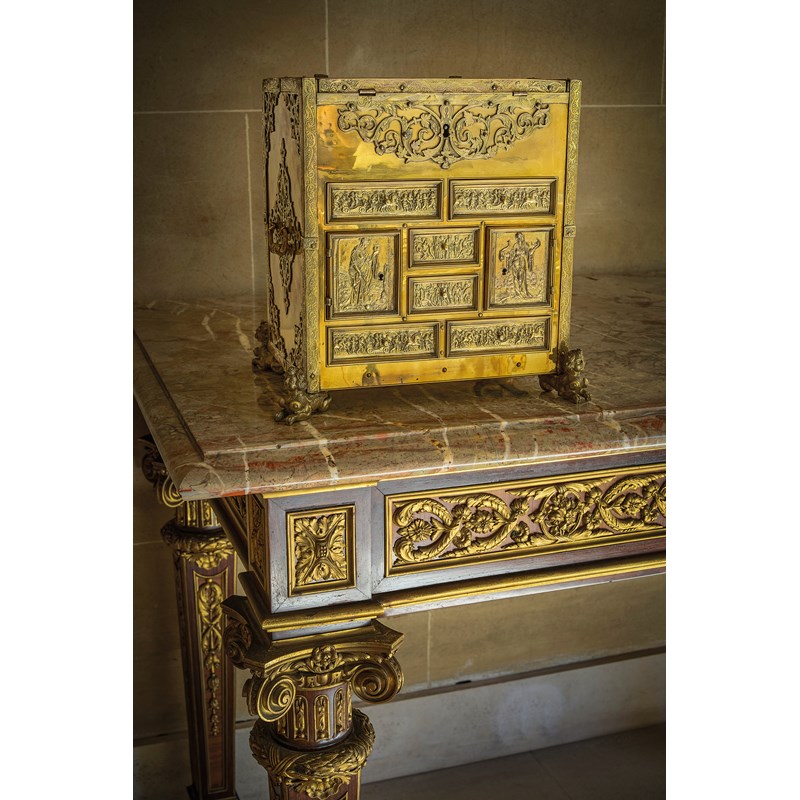
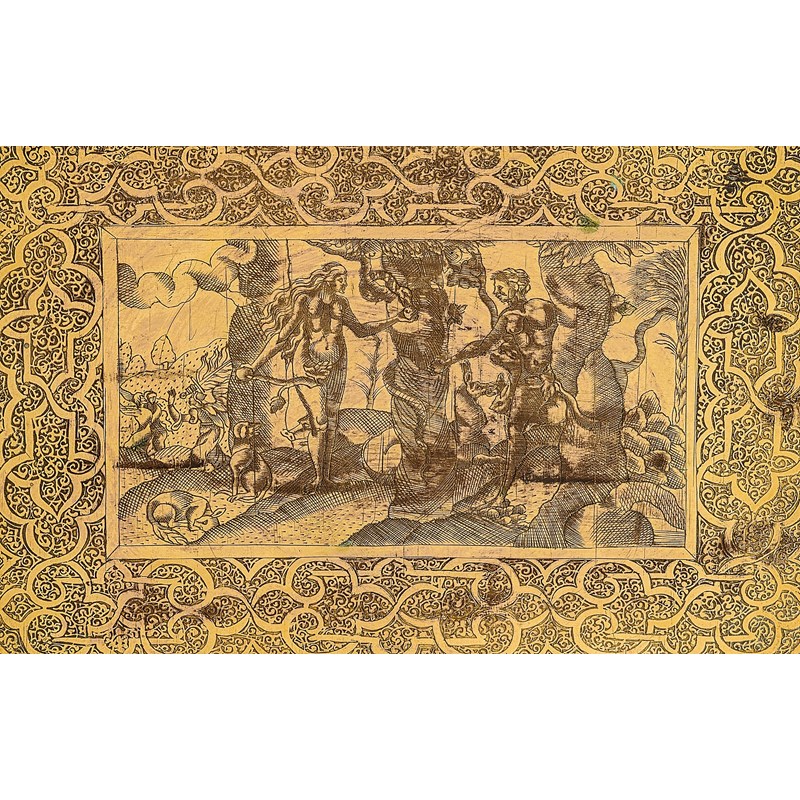
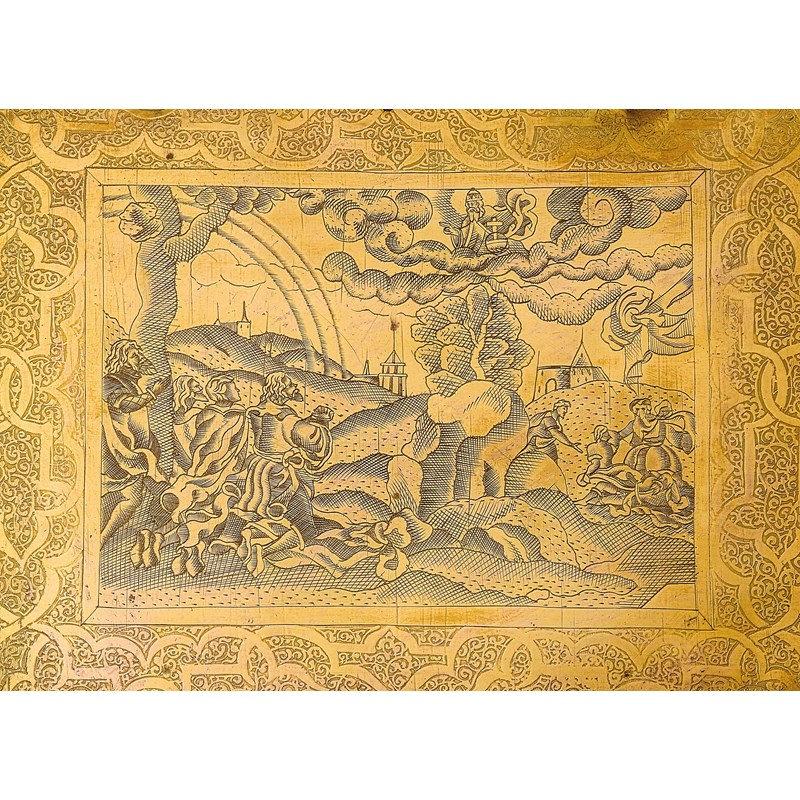
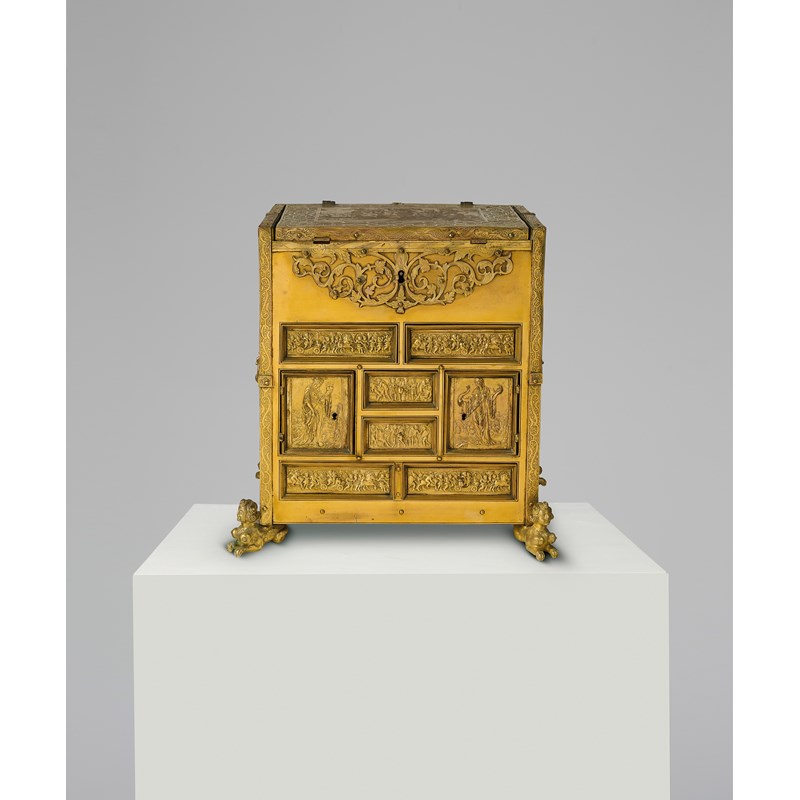
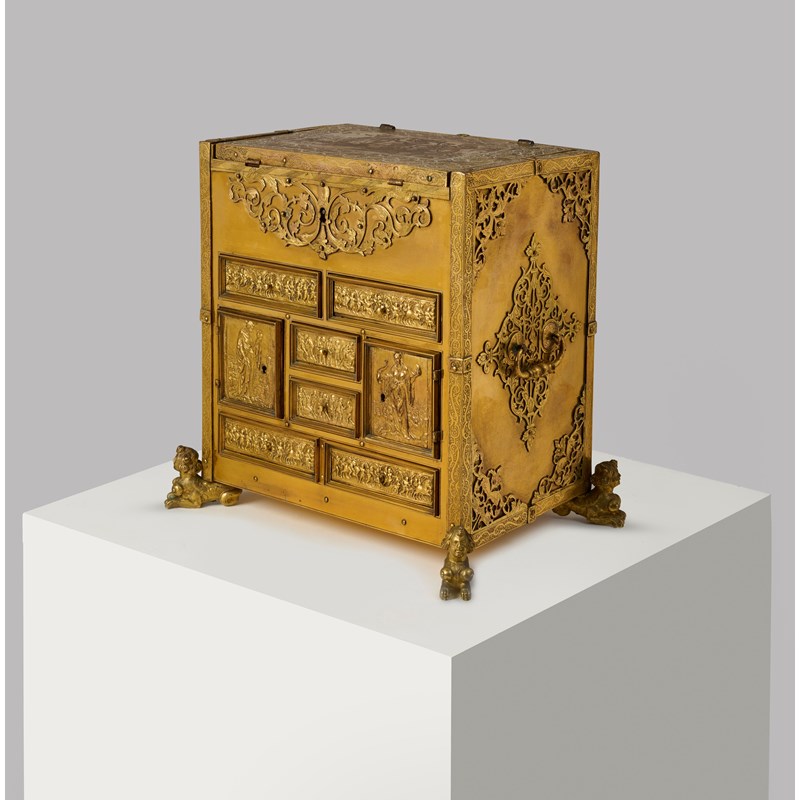
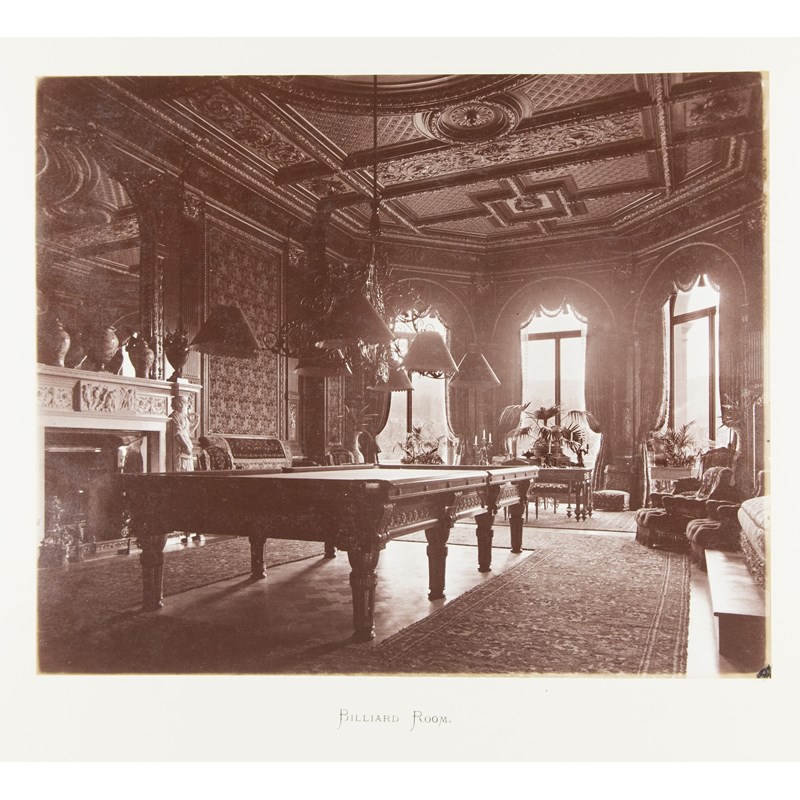


 Live online bidding is available via our own
Live online bidding is available via our own